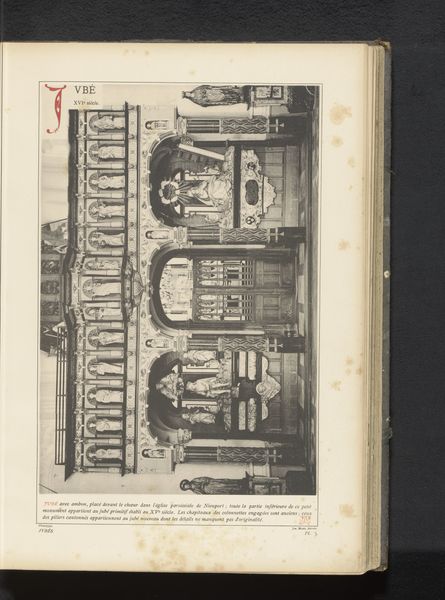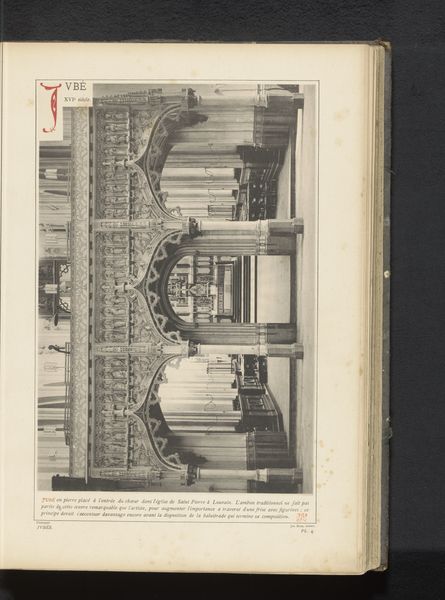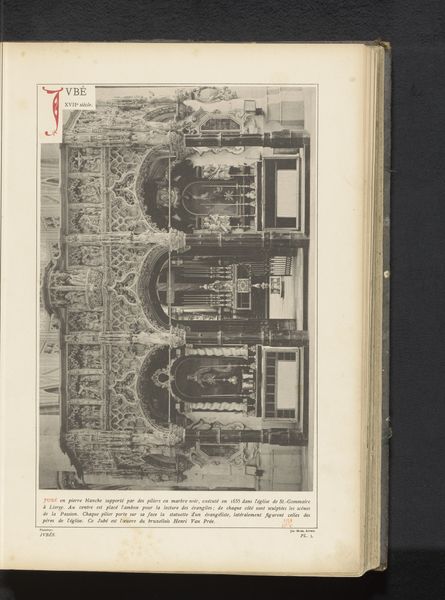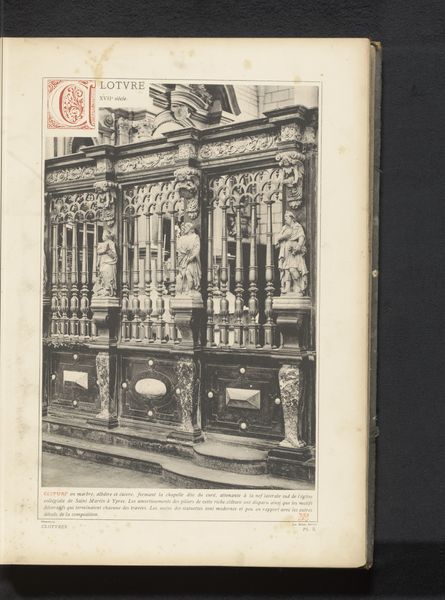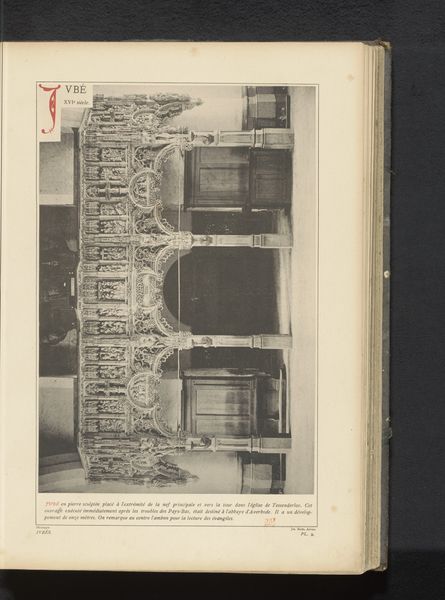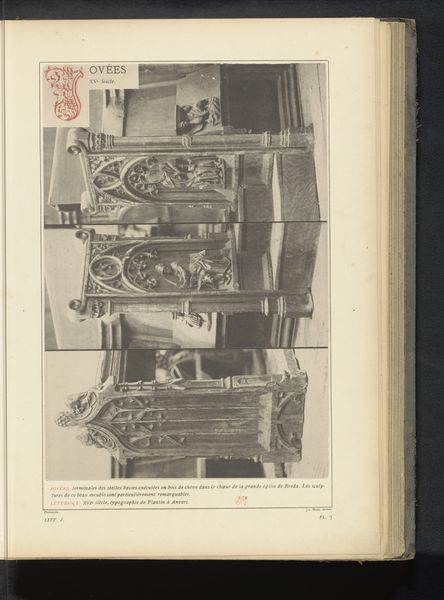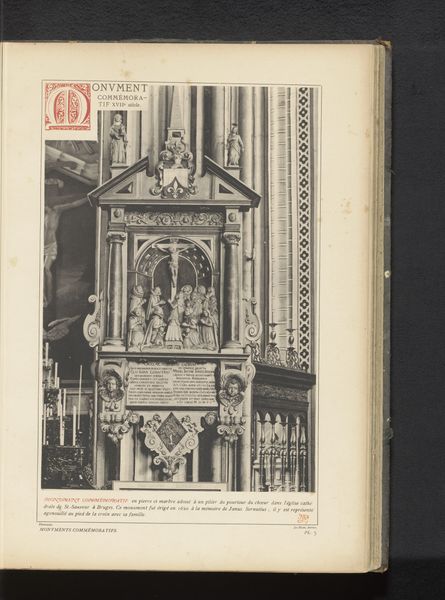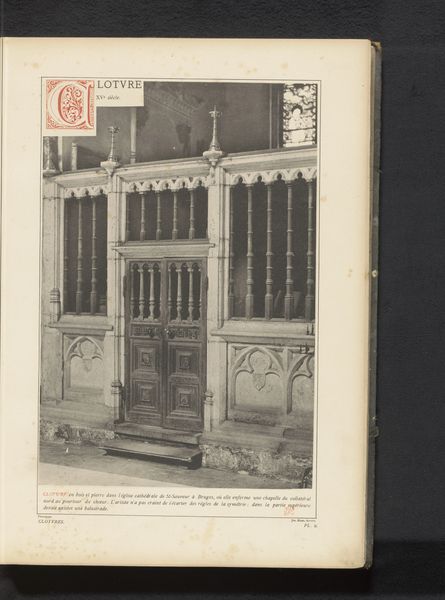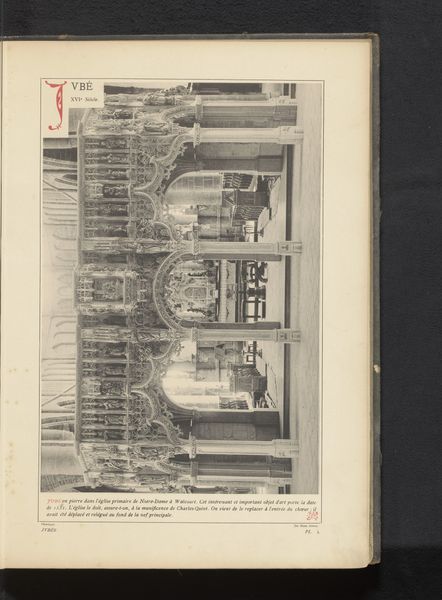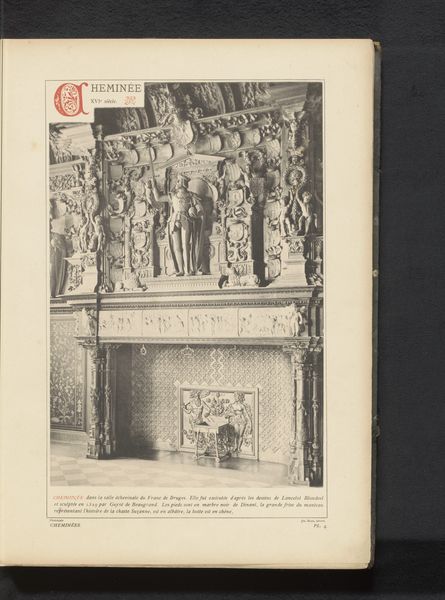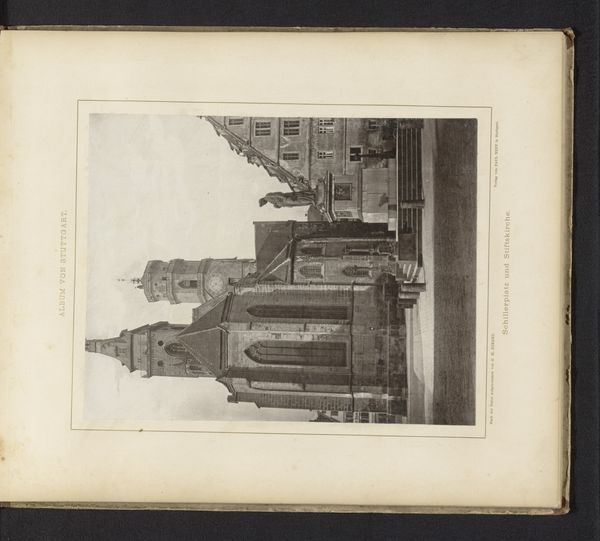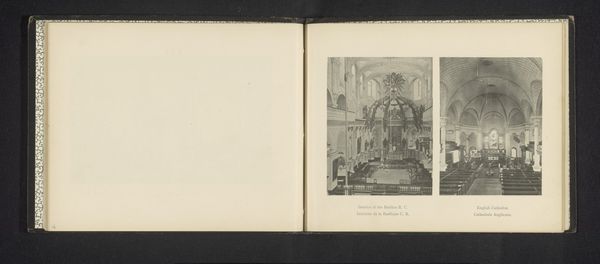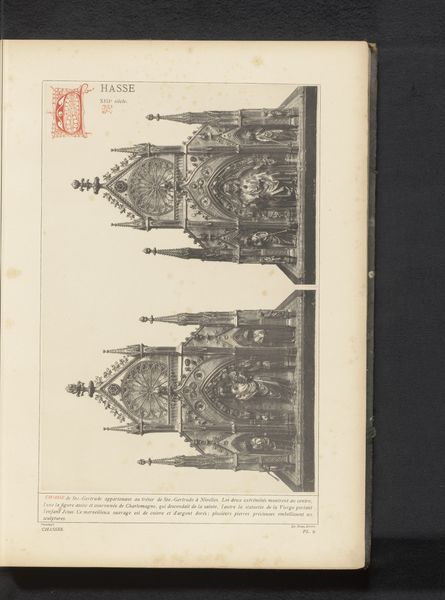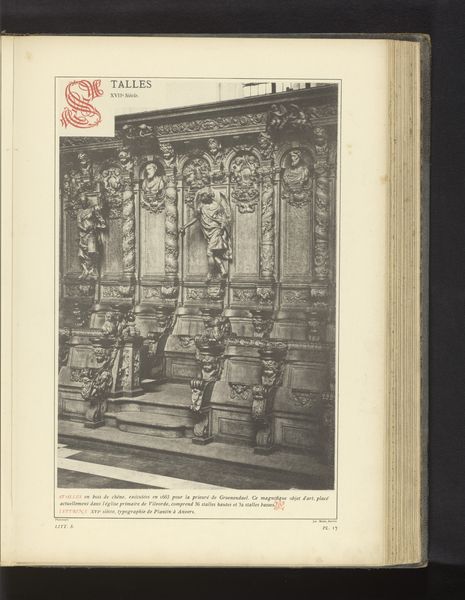
print, photography, architecture
# print
#
photography
#
history-painting
#
architecture
Dimensions: height 229 mm, width 340 mm
Copyright: Rijks Museum: Open Domain
Editor: Here we have an intriguing photographic print, "Doksaal van steen in de Onze-Lieve-Vrouwekerk in Aarschot, België", dating from before 1887. The ornate detail is mesmerizing! What can you tell me about it? Curator: This print offers a valuable glimpse into how architectural monuments were documented and disseminated in the late 19th century. It isn't simply a picture; it reflects the contemporary obsession with historical preservation and the rise of architectural photography as a tool for both scholarly study and public consumption. Editor: How so? It feels like more than just documentation. Curator: Consider the very act of creating and circulating this image. Who was the intended audience? How might viewing such a photograph in, say, a bourgeois home, shape perceptions of Belgian national identity and religious heritage? Does it function almost as a souvenir? Editor: It’s almost as if owning the print equates to owning the cultural importance of this religious artwork. I guess this is before widespread accessible tourism, maybe the print offered that vicarious experience. Curator: Exactly! The print could foster a sense of civic pride and connection to a shared cultural history. The image, meticulously capturing the intricate stonework, visually reinforces the artistry and skill invested in creating such a structure. It promotes specific understandings and, naturally, some exclusion of others. Editor: So it is about controlling cultural narrative, more than mere presentation. This puts a totally different spin on it for me, viewing photography as an expression of cultural power! Thank you! Curator: Absolutely. I find the image so compelling when viewed as evidence of a specific cultural and historical moment, beyond its sheer aesthetic value.
Comments
No comments
Be the first to comment and join the conversation on the ultimate creative platform.
